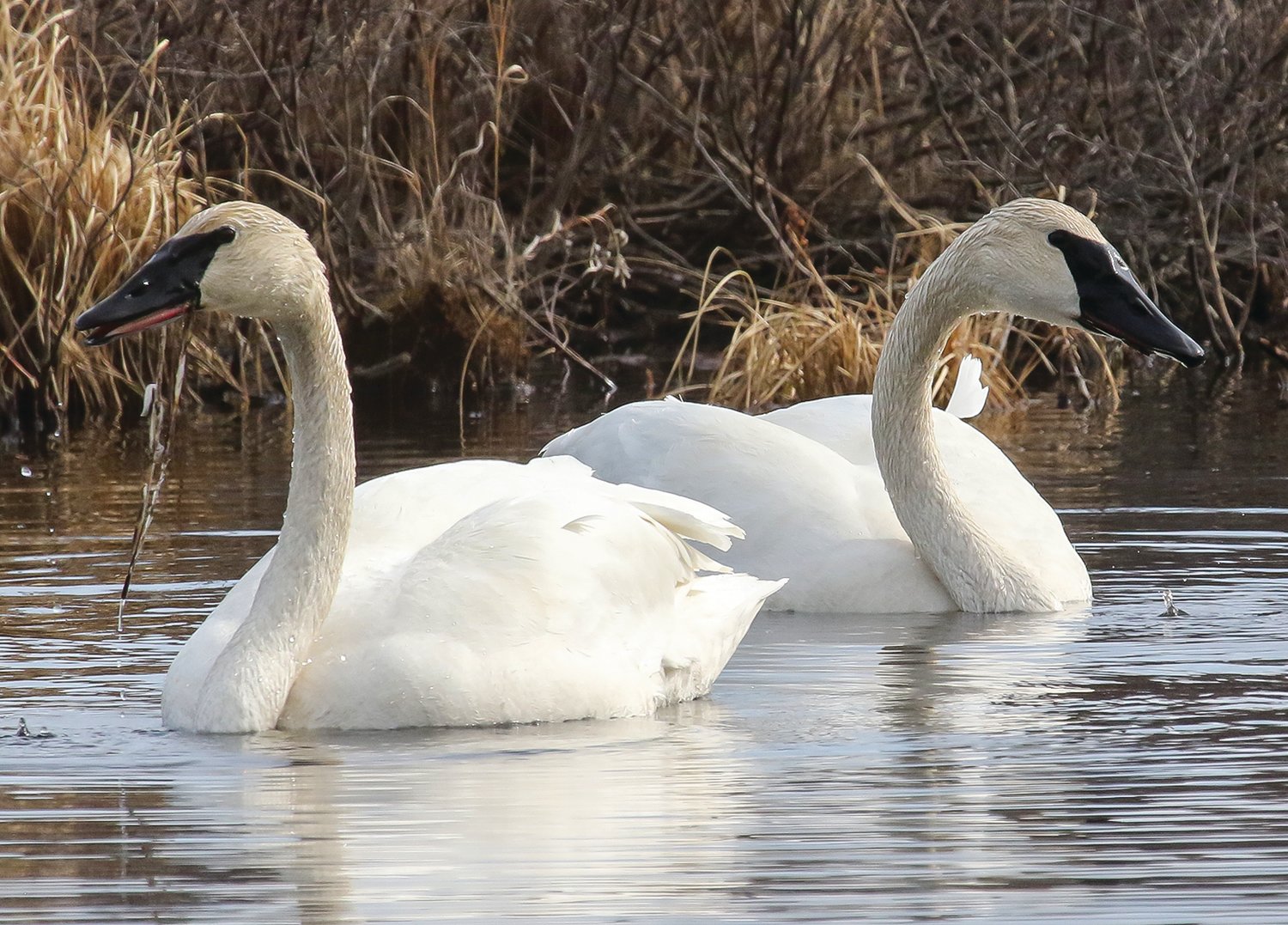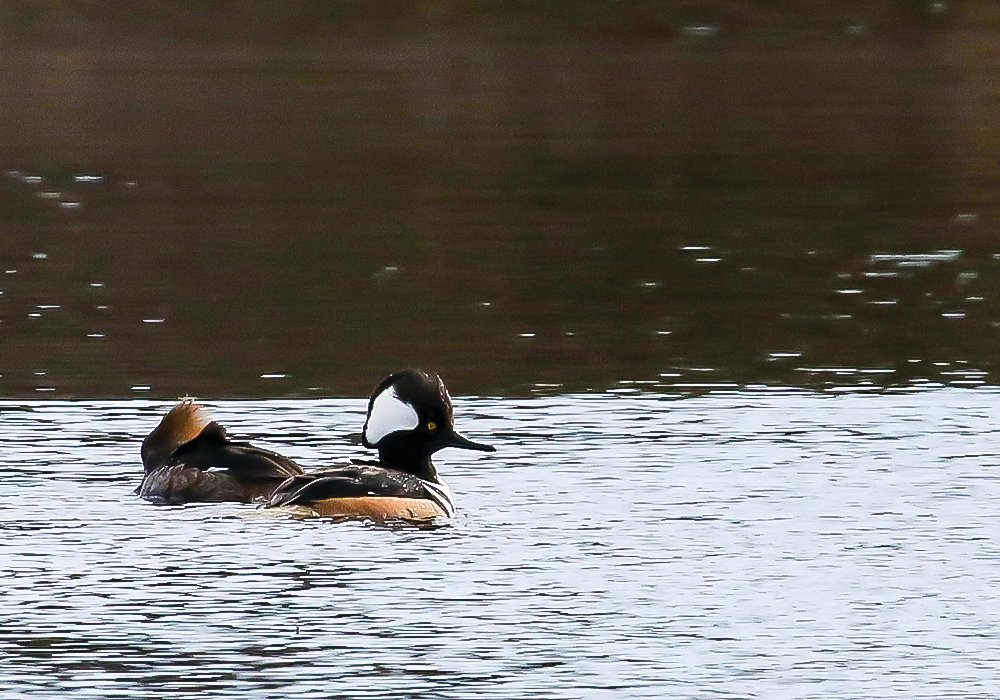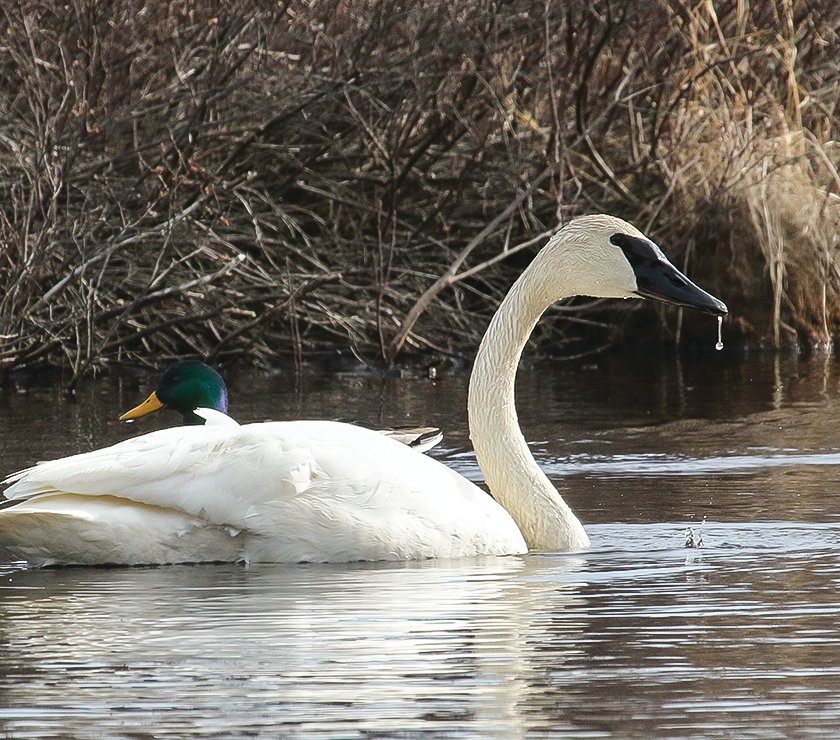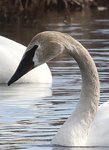Support the Timberjay by making a donation.
When winter gives way
As the North Country waits for open water, waterfowl gather
As a regular photographer of wildlife, I’ve learned that there’s usually a relatively narrow window of opportunity to capture images of waterfowl— at least doing so easily. Each …
This item is available in full to subscribers.
Attention subscribers
To continue reading, you will need to either log in to your subscriber account, or purchase a new subscription.
If you are a current print subscriber, you can set up a free website account and connect your subscription to it by clicking here.
If you are a digital subscriber with an active, online-only subscription then you already have an account here. Just reset your password if you've not yet logged in to your account on this new site.
Otherwise, click here to view your options for subscribing.
Please log in to continue |
When winter gives way
As the North Country waits for open water, waterfowl gather
As a regular photographer of wildlife, I’ve learned that there’s usually a relatively narrow window of opportunity to capture images of waterfowl— at least doing so easily.
Each spring, waterfowl chase the retreating ice north and as the ice disappears the ducks, geese, and swans have a supply of open water that expands almost daily. The more open water, the harder it is to get close enough to photograph them.
Which is why I’m always on the lookout for that early open water, which tends to attract an abundance of waterfowl, typically in relatively confined areas. Small rivers and beaver ponds make up much of the early open water, so that’s when I like to don my camo, grab my big lens, and keep my eyes open.
You never know what you’ll find, but I’m rarely disappointed. I still remember the time I visited a beaver pond near my house where about two dozen ring-necked ducks were hanging out. I worked my way up on them, keeping the beaver’s dam between us to block my approach. Eventually I slowly stuck my head above the dam and was able to reel off several good shots before a couple of the ducks saw me move. Yet, rather than fly away, the sudden movement made them curious. I guess spending your day hanging out on a beaver pond can be pretty uneventful, because as the word spread that something interesting was happening over my way, the ducks got very animated and all made a beeline to my location to check out what had just become the talk of the pond. Soon I had two dozen ring-necked ducks, crests raised, nearly tripping over themselves trying to get a better look at me. In my camo, which includes a hat and veil, they obviously didn’t view me as a human, and it gave me the opportunity to get some of the best duck shots I had taken up to that point.
Recently, it was the disappearance of ice on the West Two River, just west of Tower, that provided the attraction. I had struck out on my original plan to photograph wood ducks that I had seen the day before on the East Two River. But the woodies were nowhere to be seen, so I was headed back home when I spotted a handful of hooded mergansers on the West Two River, which had just cleared of ice the day before.
While not quite the oh-my-god glory of a male wood duck, a male hooded merganser is a beauty, nonetheless, so I parked a bit down the highway and dropped down into the cedar swamp there to work my way back to the river edge.
By the time I commando-crawled to a decent vantage point, the mergansers had moved off a bit, only to be replaced by a pair of trumpeter swans, which had no idea I was propped against a cedar snag near the river’s edge, which gave me an unobstructed view as they actively fed along the river’s opposite shore. When I get such an opportunity, I’ll spend lots of time, even after I’ve taken every conceivable image. After all, how often do you get to watch such magnificent wild birds at close range while they go about their business unaware of your presence?
I will say that trumpeters may not be as cautious as other waterfowl, which allowed me to adjust my position to ward off kinks in the neck or other places that can come from holding odd positions for extended periods. Trumpeters, after all, are protected, so they don’t have to be as wary as those species that could end up on a dinner plate if they aren’t careful. And trumpeters, at up to 30 pounds and with an eight-foot wingspan, are also large enough to fend off all but the biggest predators. So, it’s understandable that they weren’t as wary as some of the ducks that were also feeding in the river.
In fact, while geese and ducks typically take turns feeding, so at least one member of their group keeps an eye out for danger, these trumpeters took no such precautions. And they frequently had their heads underwater for a minute or more, which also gave me plenty of time to adjust my position.
After watching what I assumed to be a mated pair, a third swan flew in and joined them. The lingering gray around the neck and head told me this was an immature bird that probably hadn’t found a mate yet. But trumpeters can live 25 years, so this young bird should have plenty of time to get to that.
As I watched the swans, other ducks flew around, coming and going. With Vermilion at that time still locked in ice, this little bit of open water was a busy place. Eventually, a pair of hooded mergansers moved in just close enough to get a few marginal images before they moved out of sight around a bend in the river.
When I eventually decided to leave, I dropped down slowly and commando-crawled my way back out until I knew I would be out of sight if I stood. It had been such a peaceful scene down there on the river. I wanted to leave it just as I had found it.













